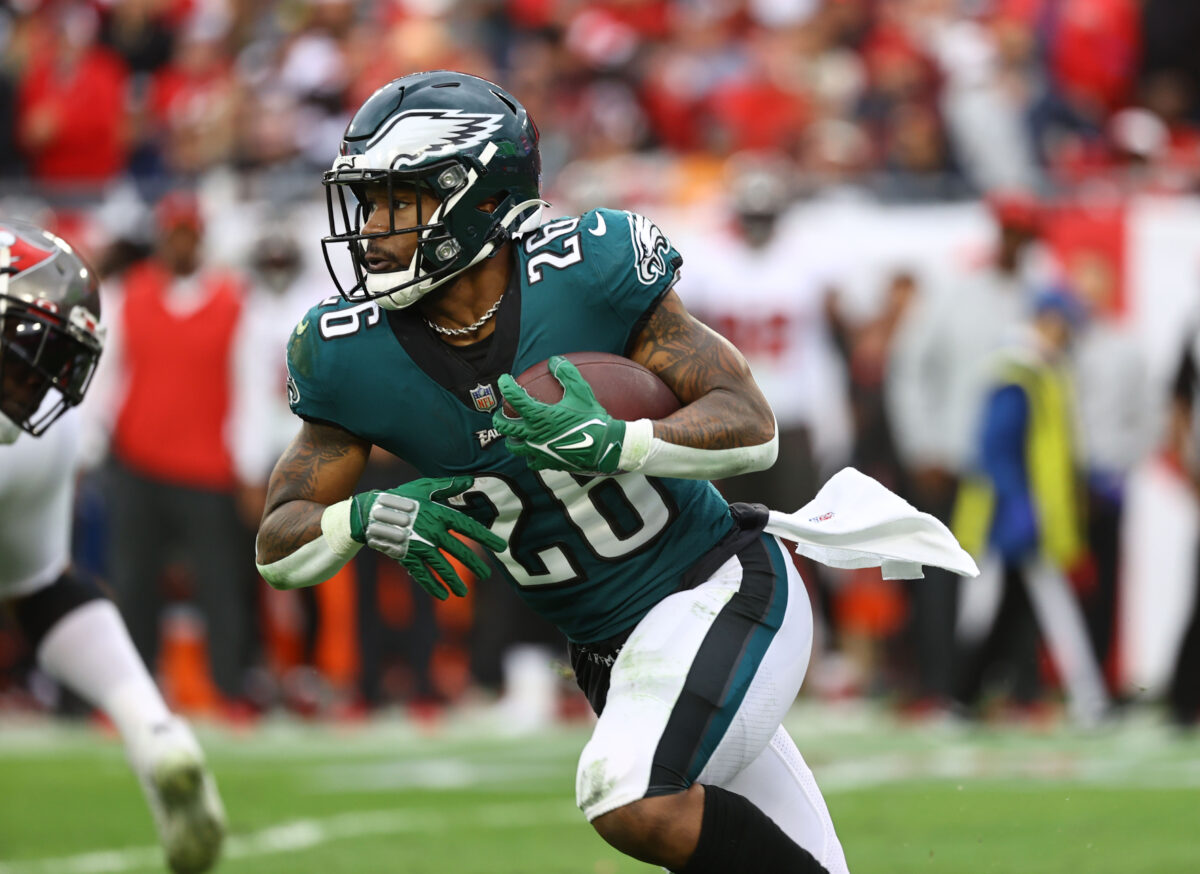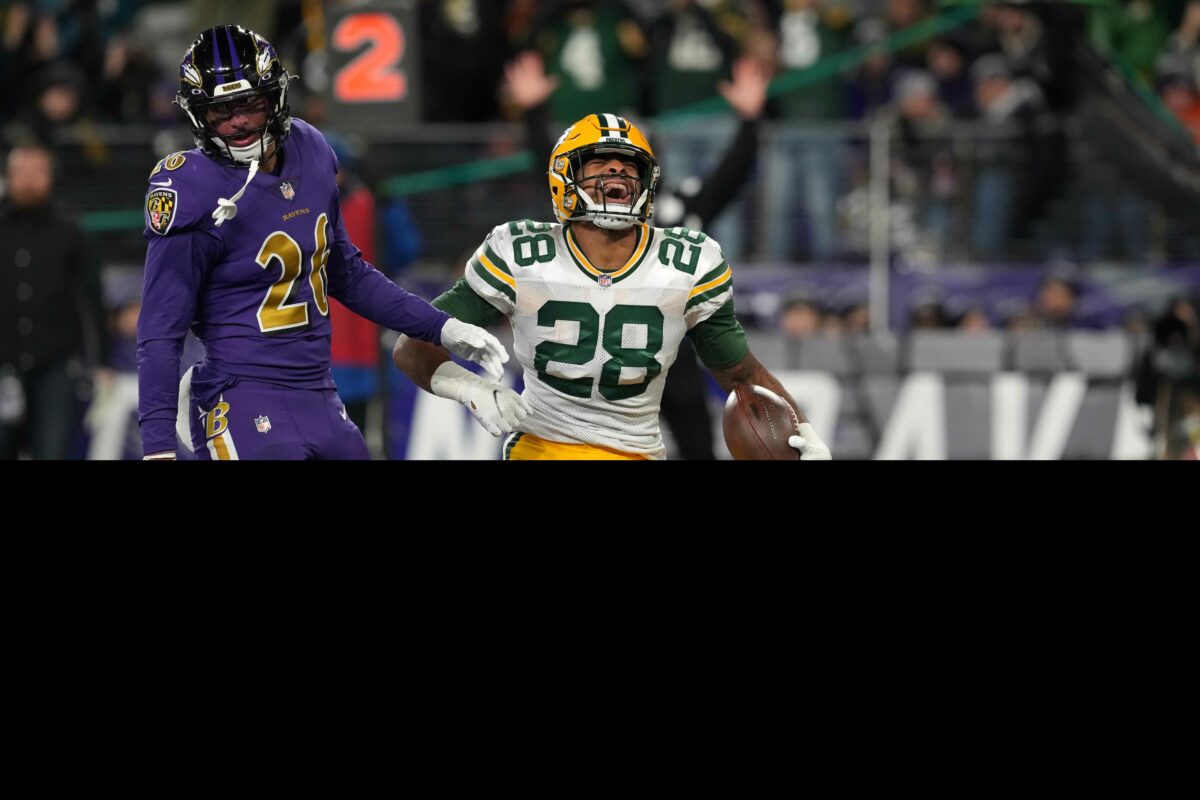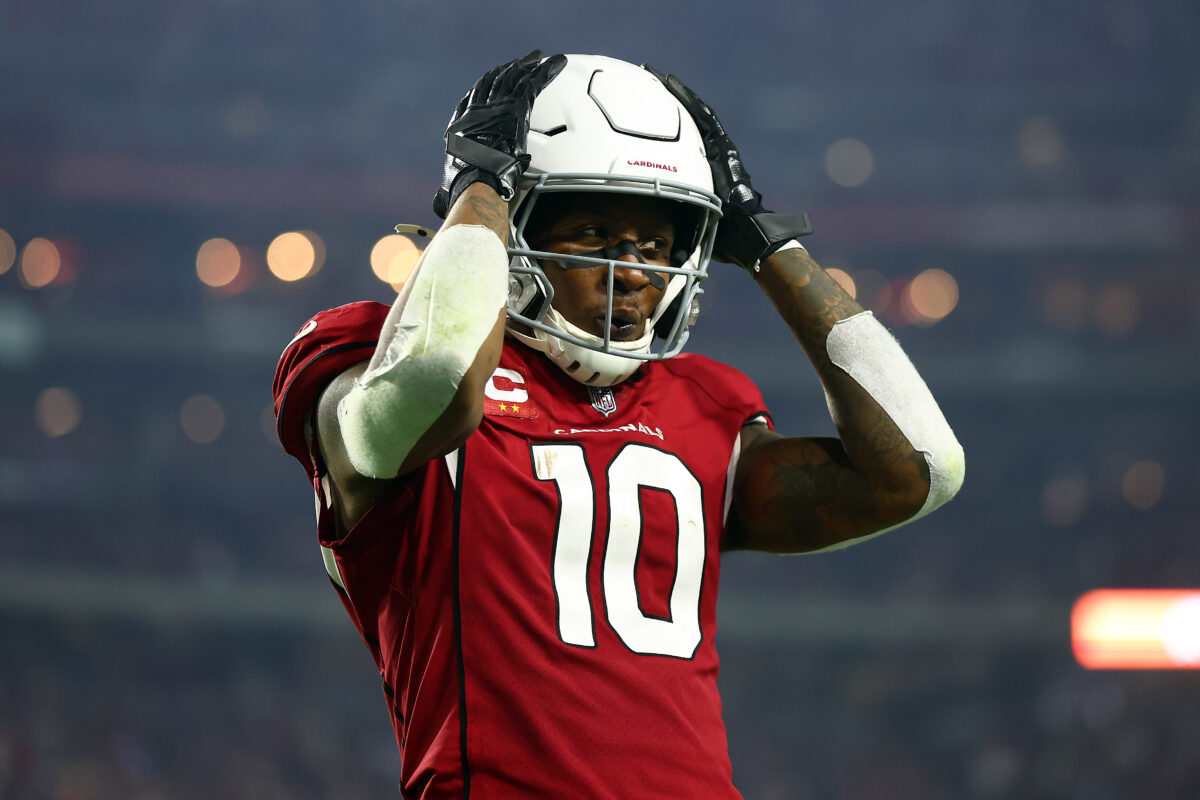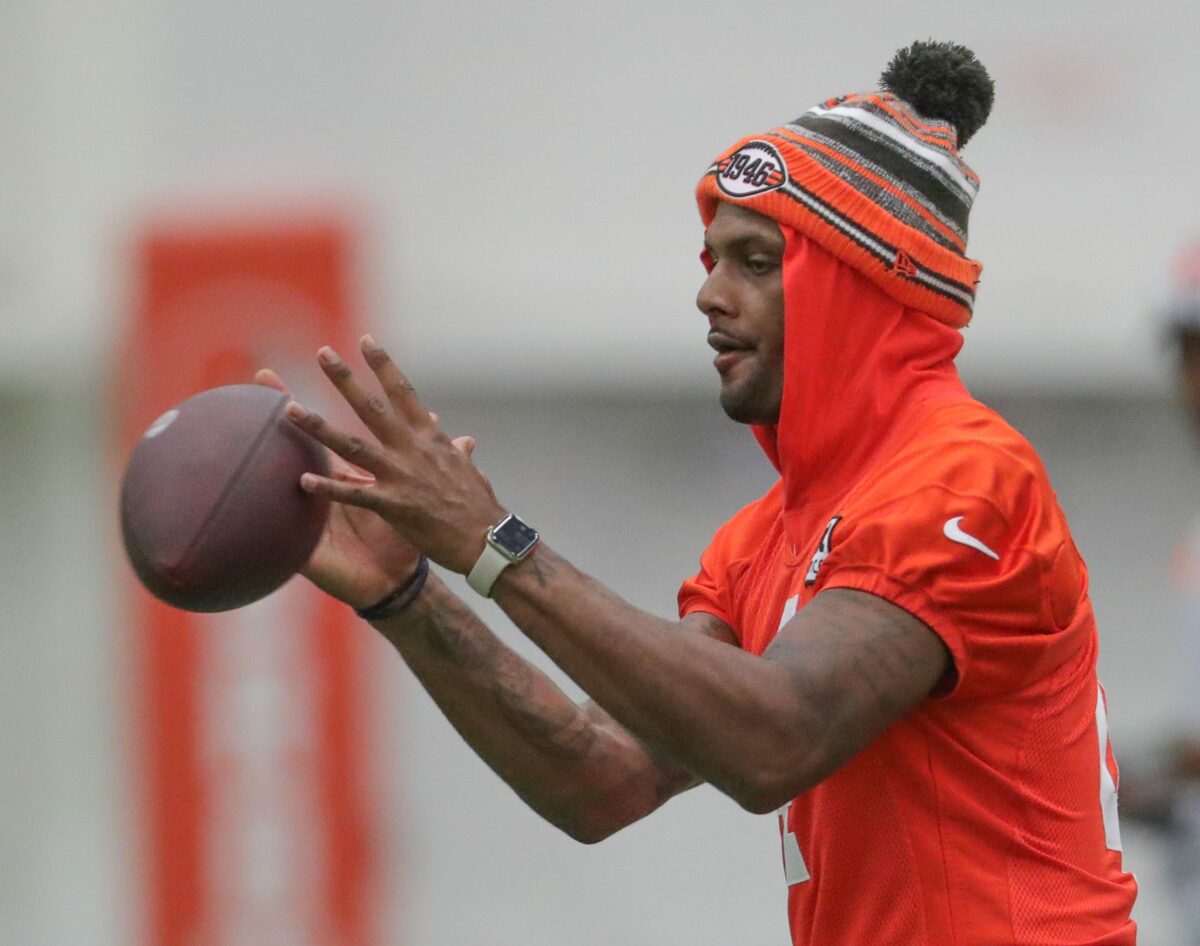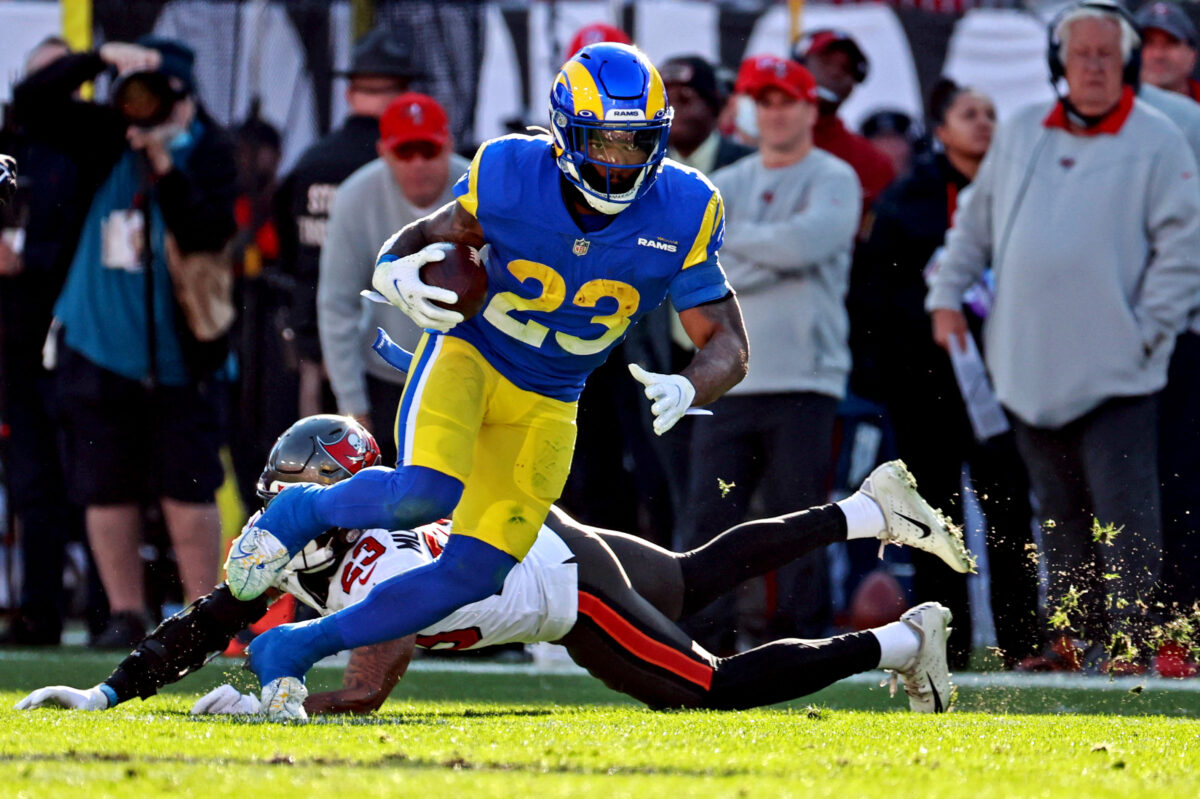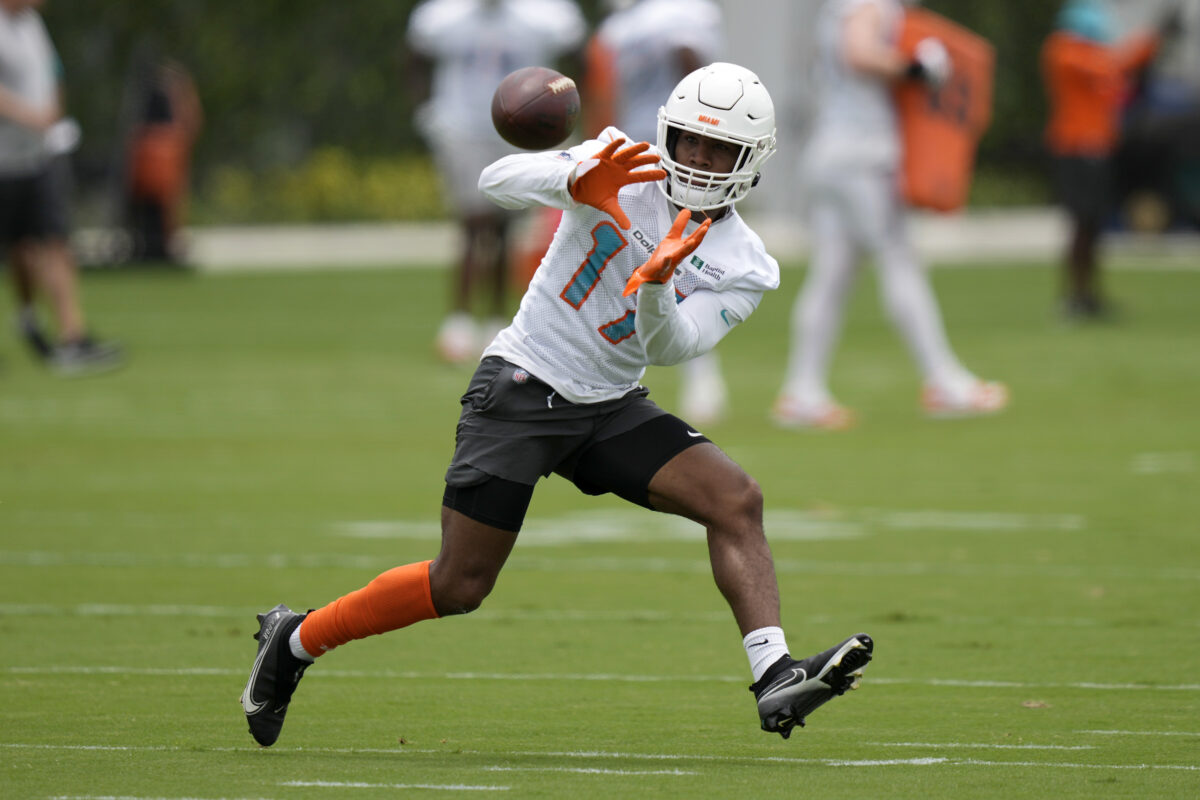The Philadelphia Eagles have been looking to install Miles Sanders their long-term featured running back, but the biggest issue since his rookie season in 2019 has been keeping him on the field.
Sanders set a solid standard in his rookie year when he was in a timeshare with Jordan Howard, leading the team with 179 carries for 818 yards, catching 50 passes for 509 yards and scoring six touchdowns. The team thought enough of Sanders to allow Howard to leave via free agency in 2020, but Sanders hasn’t held up in the two seasons since. He missed four games due to injury in 2020 and missed five games last year, which opened the door to the returning Howard, Boston Scott and Kenneth Gainwell to get more reps – and steal touchdowns. Those three backs and quarterback Jalen Hurts combined to score 25 rushing touchdowns, while Sanders ended up with none.
Eagles head coach Nick Sirianni didn’t mince words at the start of training camp when asked about Sanders taking reps with the second team in practice, saying, “Miles is our guy. There’s no secret here.”
[lawrence-related id=467522]
As he enters the final year of his rookie contract, Sanders has millions of reasons why he wants to put his stamp on the offense despite seeing a decline in rushing attempts (179-164-137), receptions (50-28-26) and scrimmage yards (1,327-1,064-912), respectively, in his first three seasons.
The Eagles struggled out of the gate last season before committing much more to the run in the second half of the year. With Hurts leading the way in rushing (793 yards), the Eagles vaulted themselves to the No. 1-ranked rushing offense in the league. However, that coincided with Sanders missing five games and Howard, Scott and Gainwell taking turns in the backfield.
If he can stay healthy, Sanders has the potential to be elite. His 5.1-yard career rushing average ranks third in the league among running backs with 400 or more carries, behind only Nick Chubb and Jonathan Taylor. His 5.66 yards per touch is fourth among running backs, behind Austin Ekeler, Christian McCaffrey and Taylor.
Anyone who has seen Sanders on a regular basis knows that he can make highlight film plays – he had a rush of 23 or more yards in seven of the games he played last season and, in 2020, had touchdown runs of 82 and 74 yards.
There is a concern in Philadelphia that the offense is going to employ a three-back system, because Scott and Gainwell proved themselves worthy of getting more playing time by their performances last year, but Sanders led the team in rushing attempts in 10 of the 12 games he played. The emergence of 2021 rookie DeVonta Smith and the arrival of game-changing wide receiver A.J. Brown gives the Eagles the opportunity to be much more productive in the passing game, which, in turn, could open things up for Sanders in the run game without eight defenders in the box most plays. Even with more passing expected, Sanders’ explosiveness lends to a high per-touch efficiency rating.
Fantasy football takeaway
When it comes to assessing the fantasy value of Sanders, zero touchdowns in 2021 is a cause for concern, which drops him to the lower portion of RB2 status. A risk-reward gamble with the ability to be a RB1, his injury history and the potential of a shared backfield group taps the brakes on any real enthusiasm.
